Connectivity
As a budget digital piano, the CDP-S100 has basic connectivity options, primarily focused on home-based use.
However, certain features can also be applied to stage and gig use (though not without jumping through some hoops).
If you want to practice with a backing track, you can connect your smartphone or music player to the Audio In (3.5mm) jack.
To use headphones, a Headphone/Output jack is provided and fits most consumer headphones with its 3.5mm (1/8″) mini jack.
To use the CDP-S100 with an external PA system or amplifier, you’ll also use this output, as there no dedicated line out jacks.
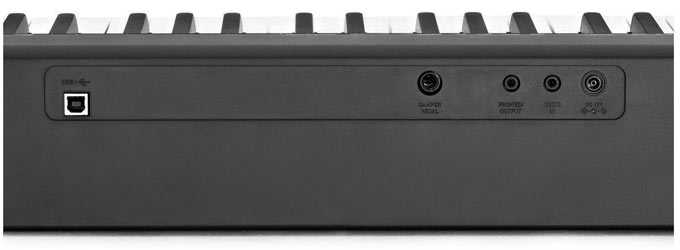
Finally, a USB type B port is included that connects the CDP-S100 to your smartphone (for use with supported apps) or to your computer as a MIDI keyboard.
This is also the port you’ll use to connect the CDP-S100 to the Chordana Play app.
Finally, a Damper Pedal jack allows you to connect any standard damper pedal to the CDP-S100. While Casio includes a pedal with each purchase, you can use any pedals you already own without any issues.
Chordana Play for iOS and Android
We’ve talked about this app throughout the review and it allows you to control the CDP-S100 with a graphical interface via your smartphone or tablet.
This is a common way for manufacturers to compensate for having no screen. Since the CDP-S100 is a budget keyboard, I can accept the screen’s exclusion.
The app itself integrates nicely when connected and allows you to use Casio’s piano tutorials and song teaching features.
Chordana Play also lets you control some functions on the keyboard, like switching between sounds and controlling metronome tempo.
While I found this app indispensable during my PX-S1000 review, I’m of a different stance with the CDP-S100.
The CDP-S100 includes helpful guides on the keyboard to assist with navigation and setting changes, so the main advantage of using the app is that you can always see the tempo of your metronome.
In short, the app will be helpful for novices thanks to the lessons if offers. Even if you’re not using the lesson functions, the control features might make the app worth it in the long run. There’s no harm in trying it out.
Достоинства
Основное отличие синтезаторов и цифровых пианино заключается в клавиатуре. Полноразмерная клавиатура этой модели представлена 88 клавишами. Они взвешенные, то есть являются практически полной копией акустического аналога (в отличие от невзвешенной клавиатуры, которой оснащено большинство синтезаторов). Благодаря молоточковой механике инструменту удается реалистично имитировать акустическое пианино.
Несмотря на компактный корпус, Casio CDP-100 оснащен встроенной акустической системой мощностью 16 ватт (две колонки по 8 Вт). Пять тембров позволяют разнообразить исполнение, однако этого довольно мало. Возможно,именно поэтому большинство цифровых фортепиано можно использовать как миди-клавиатуру и подключать к компьютеру: возможности звучания расширяются за счет подключаемых плагинов.
Наличие разъема под наушники — очень важная вещь для любого цифрового инструмента. Так можно играть даже ночью, не мешая соседям. Однако стоит помнить, что разъем представлен стандартным «джеком», поэтому простые бытовые наушники для компьютера или телефона не подойдут (в них «мини-джек»). Переходник можно приобрести за небольшие деньги в музыкальных и компьютерных магазинах, а также в магазинах радиотехники.
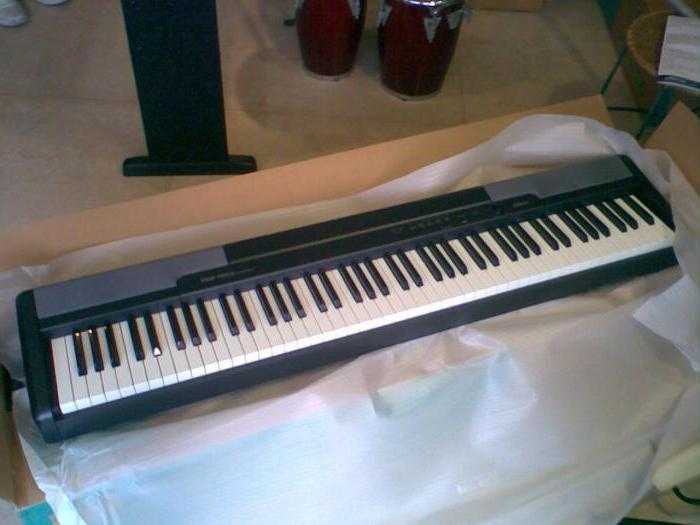
Summary
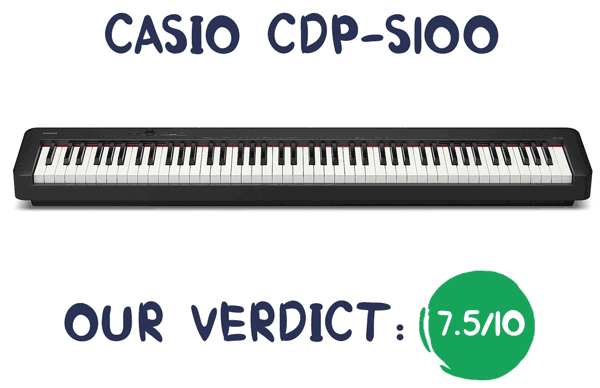
Pros
- Slim and portable
- Surprisingly good keyboard for the price
- Well sampled piano sounds
- Accurate touch sensitivity
- Clean sounding speakers
- Decent user interface
Cons
- No onboard MIDI recorder
- Less than stellar connectivity options
- Keys have a shorter pivot length
As far as budget digital pianos go, the Casio CDP-S100 is a good choice for the price.
The key action and samples included with the CDP-S100 are new and they definitely show it when compared to the somewhat older keyboards in this price range. Overall, I’m impressed with the quality here.
While most of the innovations are ripped from Casio’s new flagship PX-S line, that’s not a bad thing, as evidenced by our immensely positive reviews for both the PX-S1000 and PX-S3000. As with those digital pianos, the CDP-S100 delivers good value in a compact package.
That said, the fact that this is compact may not be as relevant as you’d think. The PX-S series was designed for stage use, hence the portability factor, but I don’t exactly see why the CDP-S series needed the same treatment.
While the compact form factor is nice to have, it comes with the caveat of a shorter pivot length for the keys.
As a beginner, this isn’t much of an issue, but advanced players may find the keys slightly jarring, especially if they are used to more premium, authentic keyboards or actual pianos.
This hampers the otherwise excellent playing experience and feels like a sacrifice that ends up hurting the CDP-S100.
The compact form factor also doesn’t make much sense considering the limited connectivity options, so it clearly isn’t meant to be used on stage.
The main reason I recommend a lightweight digital piano for practice is if you’re always on the go, but that doesn’t seem like a large enough target demographic to warrant the new design.
Minor complaints aside, there’s nothing bad about the CDP-S100.
Back-facing speakers make the CDP-S100 right at home on a desk and you’ll enjoy the excellent speaker quality even without a stand (a common issue on keyboards with down firing speakers).
Piano sounds and key feel are subjective matters, and while I’m satisfied with the CDP-S100 in that regard, I recommend that you test things out before making your final purchase.
I strongly recommend considering the Roland FP-10 if you’re looking into the CDP-S100.
This uses Roland’s well-received PHA-4 Standard key action, which is used in other mid-range keyboards and has Roland’s SuperNATURAL piano modeling technology behind the piano sounds, delivering a more realistic sound to my ears.
In conclusion, the CDP-S100 is a great choice as a budget digital piano and is worth considering for beginners and intermediate players alike.
The keys feel good and the sounds are well sampled for the price.
If you’re looking for a good first digital piano to practice on or simply want a digital piano that’s portable and usable no matter where you are, then the CDP-S100 is a worthy option.
Check the availability and current price of the Casio CDP-S100 | CDP-S150 in your region:
US: ( What Retailer to Buy From )Sweetwater (CDP-S150) Guitar Center (CDP-S100)
UK & Europe:Amazon UK Gear4Music Thomann
Другие характеристики
Полифония представлена 32 голосами. Этого не хватает для исполнения функций автоаккомпанемента и арпеджиатора, поэтому их нет. Также нет и метронома, хотя в следующей модели он уже имеется. Стойка, как правило, не входит в комплект, поэтому при покупке уточняйте комплектацию. К цифровому пианино Casio CDP-100 помимо оригинальной фирменной стойки из ДСП подойдет практически любая подставка от синтезатора. Использование Х-образной стойки поможет сделать пианино более компактным.
Корпус цифрового пианино Casio CDP-100 выполнен из качественного пластика. Несмотря на это, инструмент требует аккуратности при транспортировке, в большей степени из-за целостности начинки. К тому же в случае поломки вследствие неправильной эксплуатации нельзя будет воспользоваться гарантийным ремонтом.
Design
While the PX-S series has a striking look, futuristic chassis, and touch-based controls, the CDP-S series follows a more traditional design with the usual buttons and knobs.
Despite differences, the CDP-S100 is still a very slim keyboard.
The dimensions of the CDP-S100 is an impressive 52″ (132.2 cm) x 9.1″ (23.2 cm) x 3.9″ (9.9 cm), slimmer than the PX-S1000 which we praised. The CDP-S100 is also very light, coming in at 23.1 lbs (10.5 kg).
This was the design ethos behind the CDP-S series, and it shows. The lightweight CDP-S100 is easy to move around and allows you to practice anywhere.
This characteristic is further exemplified by the CDP-S100’s ability to run on 6AA batteries.
Now you can run the keyboard from the AC mains using the provided AC adapter, but 6 brand-new batteries should give you a full 10+ hours of battery life, which is no small feat considering the CDP-S100 has onboard speakers.
| View on Amazon | Keys | Width | Depth | Height | Weight |
|---|---|---|---|---|---|
 |
88 | 52″ | 9″ | 4″ | 23.1 lbs |
 |
88 | 50.5″ | 10.1″ | 5.5″ | 27.1 lbs |
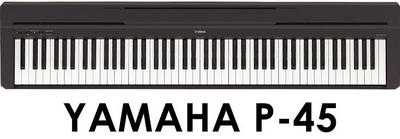 |
88 | 52.2″ | 11.6″ | 6.0″ | 25.4 lbs |
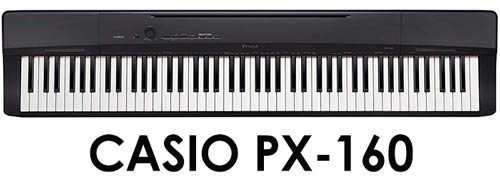 |
88 | 52.0″ | 11.5″ | 5.5″ | 24.5 lbs |
 |
88 | 52″ | 9.1″ | 4″ | 24.7 lbs |
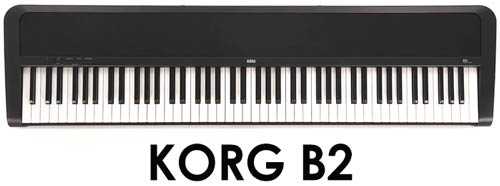 |
88 | 51.6″ | 13.2″ | 4.6″ | 25.1 lbs |
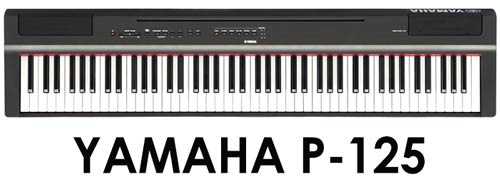 |
88 | 52.2″ | 11.9″ | 6.5″ | 26 lbs |
Apart from its slim form factor, the chassis is standard. The materials are plastic, though the surface has a matte texture, so fingerprints are less of an issue.
In terms of sturdiness, the CDP-S100 is decent, with the chassis remaining solidly in place even when applying heavy force. If anything, the CDP-S100 should survive collisions, but perhaps with a few scratches.
The same build quality can be found in the volume knob, which stays in place and does not wiggle around. A good amount of resistance is also present, allowing precise volume changes.
I also like how the buttons feel, having a soft, tactile click that can be felt (but not heard) when each button is pressed down.
Something worth considering here is that the presence of physical buttons on the CDP-S100 might be important for the visually impaired.
Since the PX-S1000 and PX-S3000 use capacitive touch controls, piano players who rely on touch are disadvantaged since touch controls require the use of visual aids.
In terms of controllability, the CDP-S100 resembles other budget keyboards in this price range, including their button and key combos.
I never liked key combinations for accessing features and functions and will take dedicated keys any day.
Most keyboards relying on key combinations (like Yamaha’s YDP 144 and Casio’s PX-S1000) require the use of a manual, since there’s no on-board guidance.
Though you’ll memorize commonly used controls over time, this is not an intuitive arrangement. Even so, the CDP-S100 does it right.
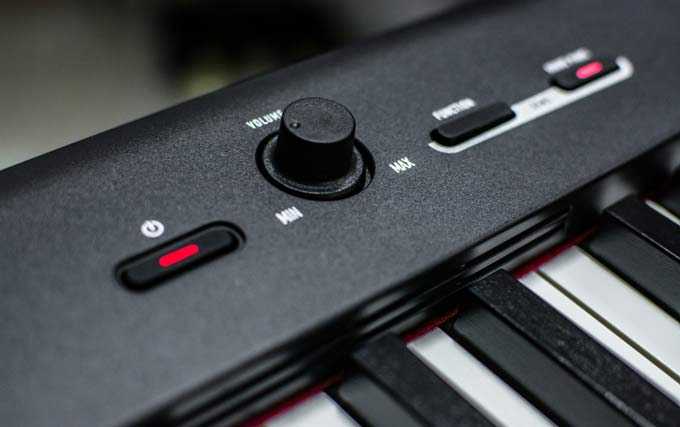
On the front panel, printed text guides above the keys guide you through the process of changing settings.
Even without the manual, it’s possible to use the CDP-S100 without issues. Casio even managed to include a numeric keypad-styled input for the metronome tempo.
On top of all that, a helpful tone plays whenever you change a setting. For example, when switching between sounds, a beep sounds that indicates changes have been made.
The same tone occurs in a few variations to indicate effect intensity.
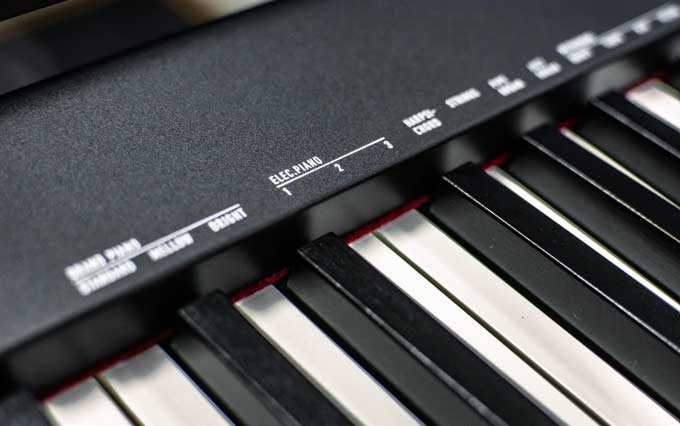
Overall, the control scheme here is nicely implemented. Key combinations may seem complicated, but they do make the front panel a lot less cluttered, which is understandable since there aren’t too many features requiring dedicated buttons.
If you can’t live without a graphical user interface, Casio’s Chordana Play for Piano app integrates with the CDP-S100.
This app is available on Android and iOS and streamlines navigation. We’ll cover this in detail in the Connectivity section, but the experience was just fine without it.
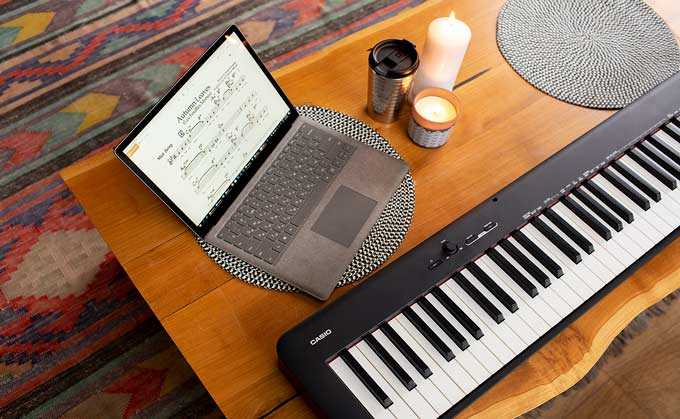
There isn’t any choice when it comes to coloring, as the CDP-S100 only comes black.
In general, the CDP-S100 follows a slim, standard design that hits all the right design cues and delivers a solid experience despite the limitations that come with a low price.
Features
As a budget piano, there aren’t many extra features on the CDP-S100, but all the necessities are included.
Modes
The CDP-S100 comes with only 1 special play mode, the Layer mode.
Layer mode allows you to play two sounds simultaneously and is a standard feature on most keyboards and digital pianos, regardless of price range.
The main way you’ll utilize this play mode is by layering strings with other sounds to get that classic, ballad backing tone. You can also layer the acoustic pianos with the electrics for a wide sound.

Unfortunately, Split mode isn’t an option here, and neither is the Duet Play mode that allows the keyboard to be used by student and teacher at the same time.
Functions
The main functions on the CDP-S100 include the following:
1) Transposing. This allows you to change the played key. Transpositions can be changed from -12 to +12 semitones in increments of 1 semitone.
2) Master Tuning. You can change the central tuning of the keyboard in steps of 0.2 Hz, from 415.5 to 465.9Hz. 440.0Hz is the standard default pitch for Middle A.
3) Metronome. Pressing the metronome button activates the in-built metronome. Tempo, time signature, and volume of metronome sound can be changed.
Keyboard
With the new PX-S and CDP-S line of keyboards, Casio has added a new key action to the mix, and it’s different than the trusted Casio Tri Sensor Hammer Action found on the previous Privia line of digital pianos.
With the CDP-S series, Casio uses their new 88-key, fully-weighted keyboard, which they call Scaled Hammer Action II.
It feels very similar to the keyboard found on the PX-S1000 and PX-S3000.
As we’ve covered in the respective reviews, these key actions are designed to accommodate the compact form factor and have shorter pivot lengths to reduce the overall width of the keyboard.
These keys are two-sensor key actions that track your keypresses passing through each sensor.
Unlike the keys found on the PX-S series, the CDP-S series does not have the so-called “smart” part of the action that relies on a software-based solution to track your keypress depth.

In terms of playability, this results in a slightly lower degree of accuracy, though from personal experience it still feels responsive. The keys are perfectly usable for practice and general playing.
Despite the downgrade from the PX-S series’ key action, the impressive feat of engineering that is the shortened width is still present, and the slim width of the CDP-S100 speaks for itself.
Now, that isn’t to say these keys are perfect. Sacrifices to the pivot length were required to achieve the smaller size, so the keys are harder to play at their upper points.
Specifically, this occurs at the upper points of the white keys, around 2 fingers from the intersection with the upper panel. If you have a habit of playing into the keys, this might be an issue.
However, if you’re a beginner, this is hardly going to be a problem, and this aspect of CDP-100’s keyboard is comparable to other entry-level piano on the market.
The keys themselves are plastic but have a simulated ivory and ebony feel, which gives a subtle grip that reduces the risk of slipping during play.
This isn’t something you get on most keyboards in this price range, so its inclusion is very welcome.
Overall, the keys play very good, especially when you consider their low price tag. While they’re slightly lighter than those found on acoustic pianos, they are a decent approximation of the real deal and work great for practice.
Touch sensitivity is also implemented nicely. The keys respond accurately to repeated key presses as well.
Speaking of touch response, there are 3 different intensity levels plus an OFF option.
Heavier settings require harder keypresses to trigger louder sound samples, and the reverse is true for the lighter setting.
I found myself liking the default setting, which delivered realistic feedback, even relative to the lightness of the keys.
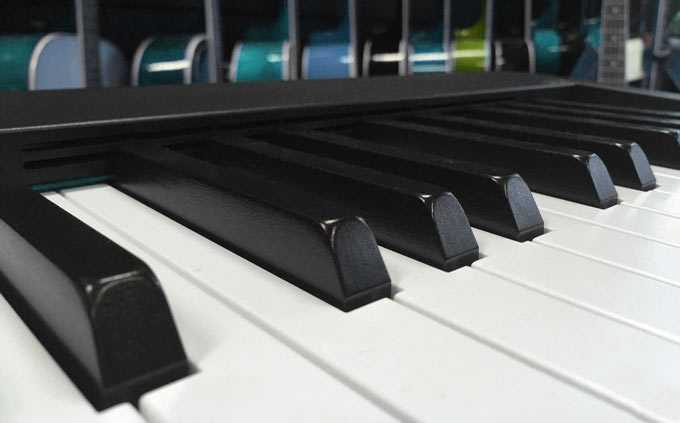
I like this keyboard, even when compared to the rest of the competitors in this price range.
It beats Yamaha’s GHS action easily (which lacks textured keys and feels less responsive overall) and feels on par with Kawai’s offerings.
However, I still prefer Roland’s PHA-4 Standard action as found on the FP-10, and it is the same key action found on Roland’s midrange keyboards, which is a steal for the price.
In conclusion, Casio’s new weighted keyboard strikes a balance between playability and portability. In this price range, the keys are often passable at best, so the CDP-S100 excels in this regard.
While I’m not totally onboard with the compromises that achieve the small form factor, there’s no denying the quality of this option.
Недостатки
Практически в любой, даже самой дорогой модели можно найти недостатки, и CDP 100 — не исключение. Прежде всего, к ним можно отнести отсутствие дисплея, что характерно для большинства моделей этого производителя. Смена настроек осуществляется механическими клавишами, расположенными на корпусе (инструкция к Casio CDP 100 идет в комплекте, практически всегда вместе со сборником нот). Небольшое количество тембров тоже можно отнести к недостаткам
Стоит обратить внимание и на небольшое количество голосов в полифонии, ведь в результате этого цифровое пианино просто не сможет отобразить целиком сложные пассажи в классических или джазовых произведениях. Клавиши выполнены из глянцевого пластика, поэтому пальцы при игре могут скользить
При исполнении аккордов быстрыми, скачкообразными движениями наблюдается смещение клавиш, то есть они немного болтаются влево-вправо. Недостаток не критичен, но музыканту следует обратить внимание на этот аспект при выборе инструмента.
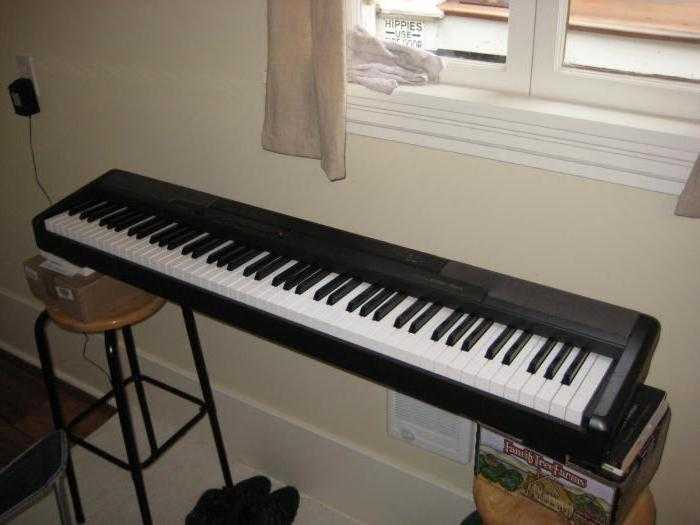
Accessories
- The Casio CDP-S100 comes with the following accessories:
- Music Rest
- SP-3 Damper Pedal
- AC Power Adapter
- Owner’s Manual
These are the basics you need to start playing, though we’ve included some recommended purchases down below.
Sustain Pedal
The included SP-3 damper pedal is a basic box-shaped pedal that isn’t very intuitive.
While it works well for practice purposes (and the CDP-S100 does not support half dampering), beginners should use the full-sized pedals that emulate the feel of those on real keyboards.
Casio SP-3 pedal
Personally, I always recommend the acoustic-like M-Audio SP-2 sustain pedal, which feels solid and is also very affordable.
Note: There’s no option to connect the CDP-S100 to an optional SP-34 triple pedal unit because it doesn’t have the required pedal port. The CDP-S150 model does have this port.
USB Adapter and Cable
A USB type-B cable allows you to connect the CDP-S100 to your phone (for the Chordana app) or your computer (for DAW or performance software). You may need an adapter to connect to your phone.
Read our MIDI Connection Guide to learn how to connect the keyboard to various devices and what you can do once connected.
Keyboard Stand
If you want a matching stand that makes the CDP-S100 feel right at home, consider the matching CS-68PBK (or its white counterpart if you like contrast).
It works with all the newly introduced Casio pianos including the CDP-S100, CDP-S350, and the PX-S series. There’s also the more affordable CS-46 stand that should also work with both series.
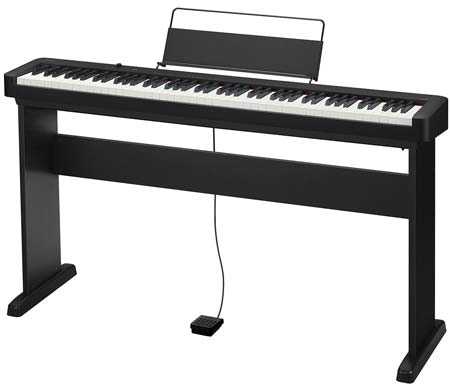
Casio CS-46 stand
The slim form factor of the CDP-S100 means you can pair this nicely with nearly any stand available. So, if you’re looking for a more portable and affordable solution, consider buying an X- or Z-style stand.
Here are a few solid options I recommend:
- RockJam Xfinity Double-X Stand (collapsible)
- Knox Z-Style Adjustable Stand
Headphones
Headphones come in very handy when you want to practice in private, focusing solely on your playing and not disturbing others nearby.
Moreover, a good pair of headphones will provide a clearer and more detailed sound compared to the onboard speakers. Check out this guide to learn how to choose the best-sounding headphones for your digital piano.


















































